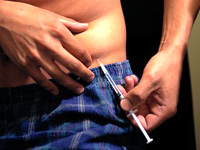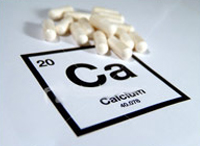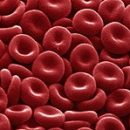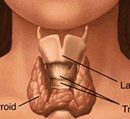Insufficiency of the functions of the germ and violation of the synthesis of sex hormones is hypogonadism. Symptoms of the disease are associated with a decrease in estrogen levels and raising the level of gonadotropins. Hypogonadism in women - manifests a disorder of the menstrual cycle and atrophic changes in genitals. Today is about it.
Content
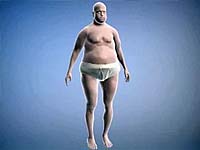 Hypogonadism, the symptoms of which are the insufficiency of the genital glands and the imbalance of the synthesis of sex hormones, should be considered as a collective concept characterizing the underdevelopment of genital signs. This state is due to the reduced function of the ovaries or is associated with the pathology of the hypothalamic-pituitary system.
Hypogonadism, the symptoms of which are the insufficiency of the genital glands and the imbalance of the synthesis of sex hormones, should be considered as a collective concept characterizing the underdevelopment of genital signs. This state is due to the reduced function of the ovaries or is associated with the pathology of the hypothalamic-pituitary system.
The disease that begins with the lesion of the ovarian tissue is primary hypogonadism, and in disruption of the functioning of the pituitary gland or hypothalamic centers, we can talk about the secondary process. Both forms of the disease can be both congenital and acquired, their mechanism and the origin of medicine until the end is not fully.
What is the cause of the lesion of individual elements of the ovarian tissue and the development of syndrome of testing feminization, when the appearance of a person matches the woman, and the genotype is a male? Where nature has given a failure, and why hypogonadism manifested itself?
Causes of hypogonadotropic hypogonadism in women
Experts of endocrinologists, gynecologists-endocrinologists and urologists are looking for answers to these issues, set by nature itself, and distinguish between several forms of hypogonadism
- embryonic;
- apprentice;
- postpubertate.
The cause of primary acquired hypogonadism in the men's body is often acute and chronic infectious children suffered in infancy: epidemic vapotitis, complicated by orchitis, traumatic damage to the testicles, castration, varicocele, atrophy and hypoplasia of the testicles after surgery, pathological omnation of testicles. All of these predisposing factors are often the cause of male infertility and hormonal failure.
The development of hypogonadotropic hypogonadism in women can be associated with inflammatory disorders in the pituitary gland, hypothalamus as a result of encephalitis, arachnoiditis, meningitis, as well as in the embryonic defeat of the central secretion glands. A separate role is allocated to autoimmune processes, as a result of which autoantibodes are formed to hormone products of pituitary or hypothalamus cells. In addition, the primary or metastatic lesion of the hypothalamic-pituitary system, traumatic damage to the skull, acute change in blood supply or Schiena syndrome, nervous anorexia and depression can cause the development of hypogonadism. In this case, we are talking about secondary hypogonadism in women, namely, the hypogonadotropic version of the disease, its characteristic feature is the deficiency or complete blockade of the synthesis of gonadotropins, which regulate the function of the ovaries.
Hypogonadotropic hypogonadism in women manifests itself in a childbearing age by one of the main symptoms — impaired menstrual cycle and lack of monthly. At the same time, secondary hypogonadism should be considered as a consequence of the initially arising deficiency of the adenogi disease function, which can be combined with a deficit of the production of other hormones. The lack of female sex hormones causes the underdevelopment of the mammary glands, insufficient fraud, uterine hypoplasia and ovaries, disruption of fat fiber deposition.
Signs of primary hypogonadism in women appear due to congenital underdevelopment of ovaries, which is characterized by primary amenorrhea, the total lack of development of the mammary glands and. Typically, such patients of high growth with eornchoid body proportions. The body is trying to compensate for this disadvantage by the development of pituitary hormones, namely gonadotropins, as a result of which their elevated amount is noted in the blood — Hypergonadotropic hypogonadism is formed.
The diagnosis of hypogonadism is aimed primarily on identifying the causal factor, which caused this hormonal imbalance. It is desirable that treatment begins before the start of puberty. Primary hypogonadism, the symptoms of which are subject to correction, is treated with cyclic hormone therapy, selected according to an individual scheme. In case of insufficiency of gonadotropic hormones, the drug is prescribed menopausal gonadotropin, which stimulates the functioning of the ovaries and the formation of genital signs.



